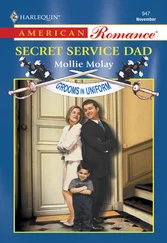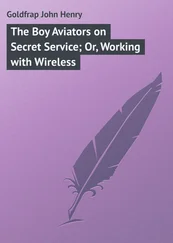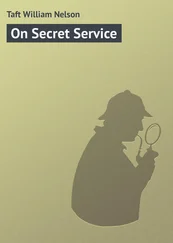Jarvis noticed a woman whose hands were under her coat.
During an event, “You’ll be in the formation and walking along with the president, you spot something, and you say something over the air to the shift leader,” Jarvis says. “You’re generally very quiet. There’s not a lot of chatter, but if you say something and you’re with the president, it means something. You size up the person that causes you to bring your attention to them, and you have to make a quick judgment as to what you’re going to do or what the detail needs to do.”
In this case, “What was strange was everyone was looking at the president—clapping, yelling, smiling,” Jarvis says. “She was staring down and had a real puzzled look on her face. Mind you, the president was two arms’ lengths from us. I let the shift leader know I had a problem, and I just wrapped my arms around this woman because I didn’t have time to frisk her.”
Jarvis held her in a bear hug as the shift and the president worked their way around him.
“She was startled, but I wouldn’t let her arms out from under the coat,” Jarvis says. “I held her until I could get some assistance, which arrived from a protective intelligence team that was nearby.”
The team interviewed the woman and quickly determined that she was mentally ill.
“She didn’t have a weapon under her coat, but you can tell mentally disturbed people by the way they react,” Jarvis notes. “And when they react the opposite of everybody else, it brings your attention to them, and you know you’ve got an issue out of the ordinary.”
To be sure, Jarvis says, “Not a lot of people would appreciate an agent grabbing them in a bear hug and pinning them against a crowd. But you’ve got maybe seconds to correctly respond to a situation that has potentially catastrophic consequences.”
“We had a young, gregarious guy who absolutely thrived on and was energized by being in crowds,” Dowling says. “We weren’t going to have a conversation saying, ‘Sir, you’re really going to have to change. This isn’t presidential.’ We really had to redefine the way we did business on the road.”
Dowling thought the fact that Clinton would plunge unpredictably into crowds could work to the advantage of the Secret Service because there was no advance notice. “The odds of somebody being there that would willingly want to do him harm were at least decreased,” notes Dowling, who later headed the Washington field office. At the same time, Dowling says, the Secret Service worked with the staff to identify places where Clinton could go and allow agents to scout out the areas in advance.
On Sunday morning, February 26, 1995, Dowling read an item in Parade magazine’s Personality Parade and knew he was in for trouble. The item asked how much truth there was to “those stories coming out of Washington that Bill Clinton is still an incurable womanizer.”
Parade answered, “If there were any hard evidence that the president of the U.S. was womanizing, you can be certain it would have appeared by now in the media. The days when the White House press corps respected a president’s privacy and ignored his extracurricular activities—as with JFK—are long gone.”
More ominously for the Secret Service, the item continued: “Insiders say the salacious rumors about Bill Clinton often can be traced to Secret Service agents, who may be feuding with the first lady. She reportedly suspects that some of the agents are snoops and tries to keep them at a distance. One agent recently spread a story that Mrs. Clinton had become so tired of her husband’s wandering ways that she threatened to seek a divorce and run against him in 1996. No one believes that outlandish tale, but unfortunately it has made its way through the Washington gossip mill.”
Dowling, the assistant special agent in charge of the Clinton detail, was working that Sunday. The Clintons were attending church, and the president said nothing to him about the Parade item. However, two hours later, Dowling was at his office in Room 62 of the Eisenhower Executive Office Building when the phone rang.
“Mr. Dowling, stand by please for the president,” a White House operator said.
“Did you see Parade magazine this morning?” Clinton asked Dowling.
“Yes, sir, I did,” Dowling replied. “I was very disturbed at what I saw.”
“This is happening all too often, that the Secret Service is purported to have said this,” Clinton said.
“For the first time in history, Mr. President, we’ve had to defend our honor in terms of being able to maintain the privacy of the family that we protect,” Dowling said. “But let’s think about this for a second. You think if we were to say something, we would say something as preposterous as that? As that your wife was going to run against you?”
“You know, you’re right,” Clinton said.
In fact, many of the stories were untrue. Hillary never threw a lamp at Bill, the Secret Service saw no indication that she was a lesbian, and Bill never left the White House to see an alleged girlfriend at the Marriott. But on August 17, 1998, Bill Clinton confessed from the Map Room of the White House on national television to his relationship with Monica Lewinsky. “Indeed, I did have a relationship with Miss Lewinsky that was not appropriate. In fact, it was wrong,” Clinton said.
The next day, the Clintons took Air Force One to Martha’s Vineyard.
“I was up at Martha’s Vineyard right after he had confessed on national TV to the whole Monica Lewinsky affair,” Albracht says. While Albracht was operating the command post, Hillary called him and said, “Where is he?”
“Ma’am, the president is downtown right now. I think he just arrived at a Starbucks,” Albracht said.
“Confirm that,” Hillary demanded, and Albracht did. Hillary then ordered Albracht to tell the president to “get home now, and I mean right now.”
Albracht passed along the message to the detail.
“Oh, my God. Clinton loves mingling with people, and he loves to play golf, but she was having none of that,” Albracht says. “Clinton was to remain at the Martha’s Vineyard estate. He was being punished. It was like he was grounded,” Albracht says.
When in public, Hillary would smile and act graciously. As soon as the cameras were off, her angry personality often became evident. During her run for the Senate, Hillary planned visits to diners and local hangouts as part of her “listening tour.”
“The events were all staged, and the questions were screened,” says a Secret Service agent who was on her detail. “She would stop off at diners. The campaign would tell them three days ahead that they were coming. They would talk to the owner and tell him to invite everyone and bring his friends. Hillary flew into rages when she thought her campaign staff had not corralled enough onlookers beforehand. Hillary had an explosive temper.”
Publicly, Hillary—code-named Evergreen—courted law enforcement organizations, but she did not want police near her.
“She did not want police officers in sight,” a former agent says. “How do you explain that to the police? She did not want Secret Service protection near. She wanted state troopers and local police to wear suits and stay in unmarked cars. If there was an incident, that could pose a big problem. People don’t know police are in the area unless officers wear uniforms and drive police cars. If they are unaware of a police presence, people are more likely to get out of control.”
In Syracuse, a bearded man who aggressively sought autographs accosted Hillary as she went for a walk outside her hotel.
“He grabbed her,” an agent says. “She was livid. But she had insisted she did not want us near her.”
Читать дальше












